A Shop Rental Agreement is a legally binding document that outlines the terms and conditions for renting a commercial shop space. It defines the roles, responsibilities, and obligations of…
continue reading
25+ SAMPLE Construction Subcontractor Agreement
-
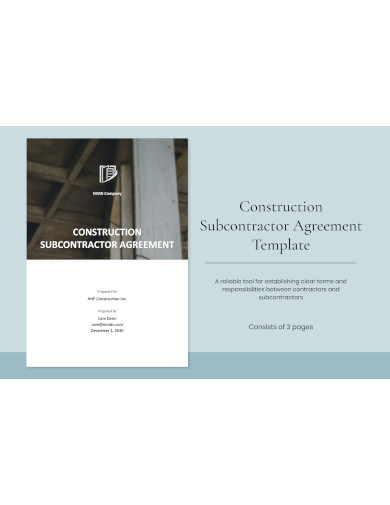
Construction Subcontractor Agreement
download now -
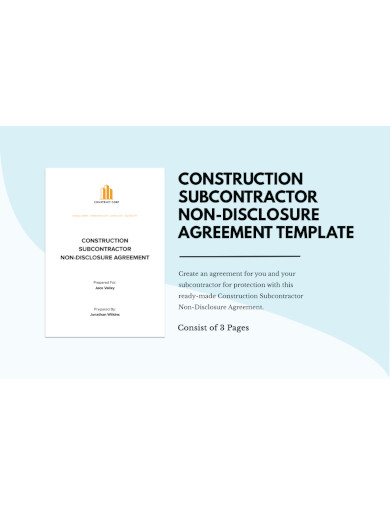
Construction Subcontractor Non-Disclosure Agreement
download now -
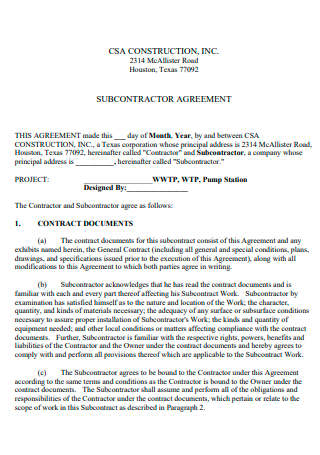
Standard Construction Subcontractor Agreement
download now -
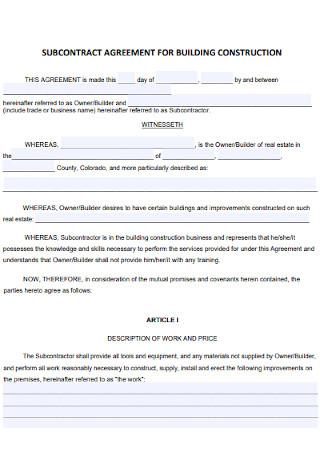
Subcontractor Agreement for Building Construction
download now -
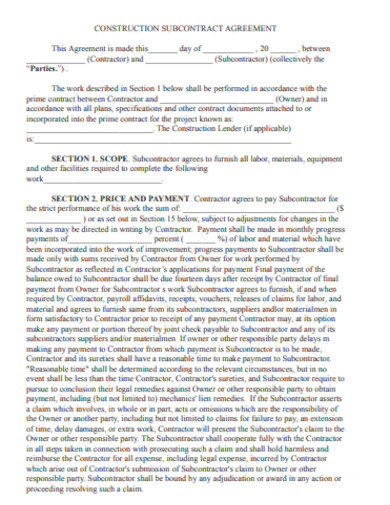
Simple Construction Subcontractor Agreement
download now -

Building Construction Subcontractor Agreement
download now -

Standard Construction Subcontractor Agreement
download now -
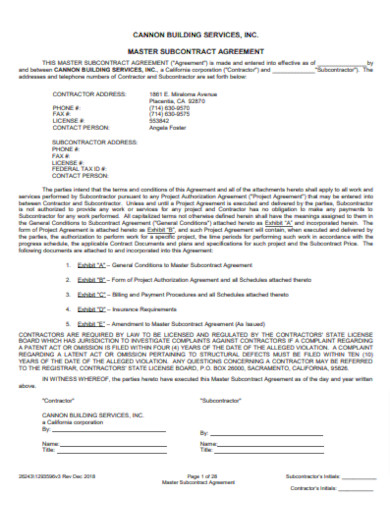
Construction Master Subcontractor Agreement
download now -

Construction Cross Street Subcontractor Agreement
download now -
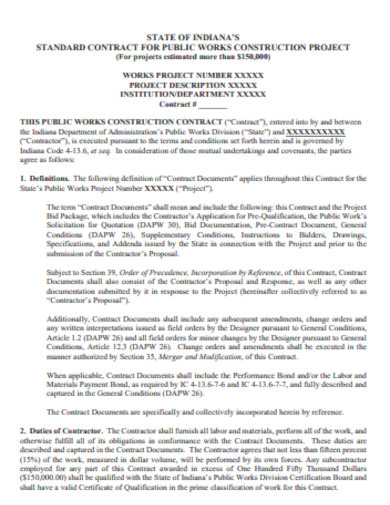
Construction Work Subcontractor Agreement
download now -
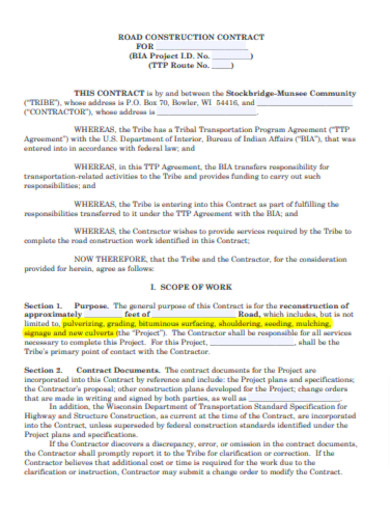
Road Construction Subcontractor Agreement
download now -
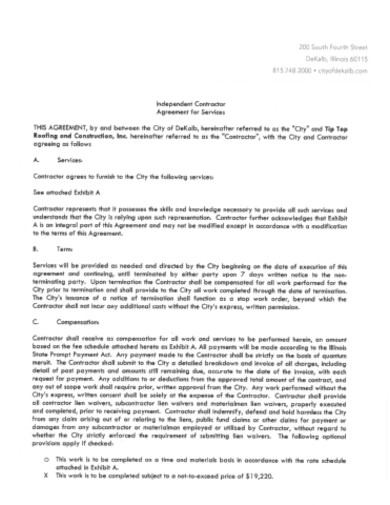
Construction Roofing Subcontractor Agreement
download now -
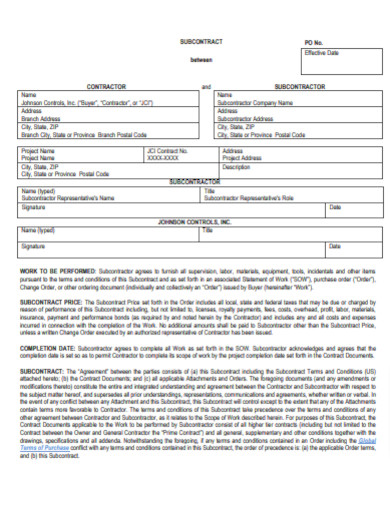
Construction Global Subcontractor Agreement
download now -

Sample Construction Subcontractor Agreement
download now -
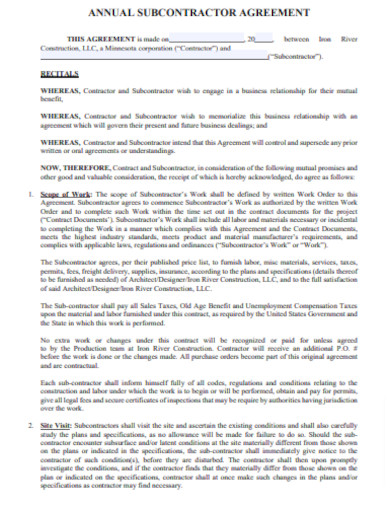
Construction Annual Subcontractor Agreement
download now -
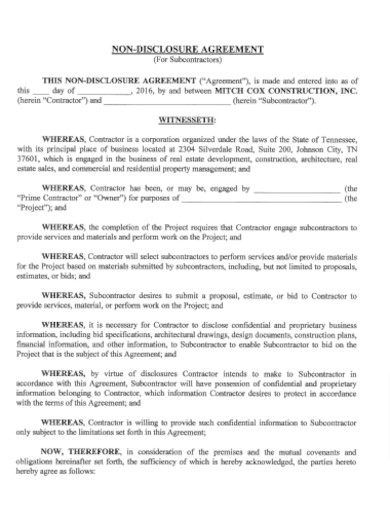
Construction Non-Disclosure Subcontractor Agreement
download now -
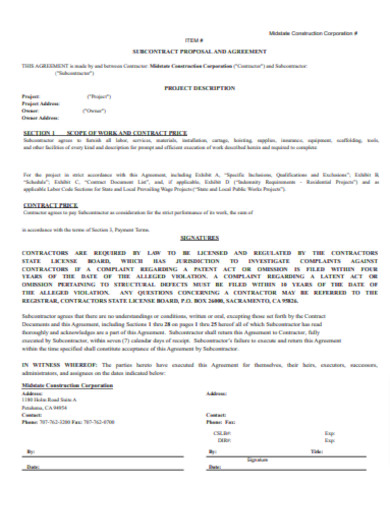
Construction Proposal Subcontractor Agreement
download now -

Basic Construction Subcontractor Agreement
download now -
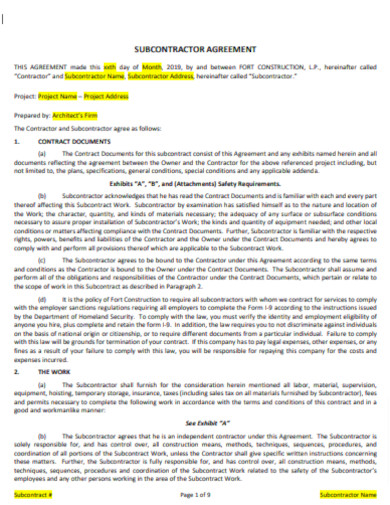
Printable Construction Subcontractor Agreement
download now -
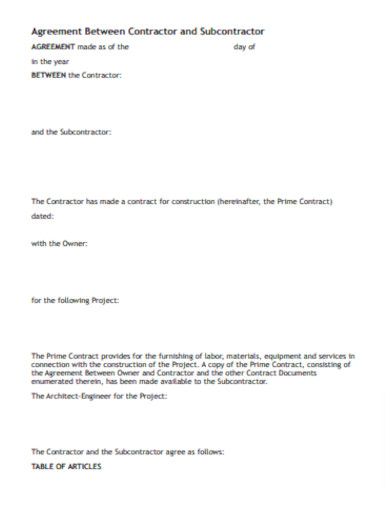
Construction Subcontractor Agreement Outline
download now -
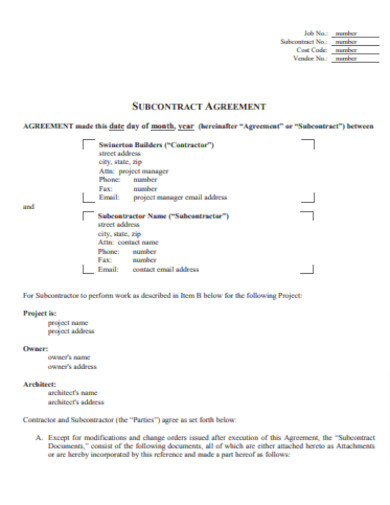
Construction Texas Subcontractor Agreement
download now -
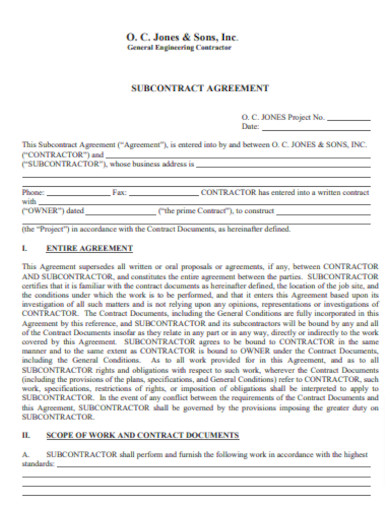
Construction Subcontractor Agreement Layout
download now -
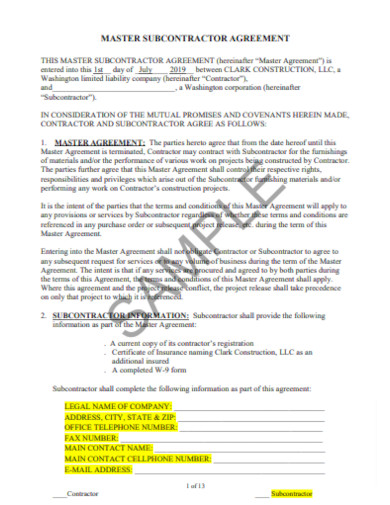
Construction Subcontractor Agreement Format
download now -
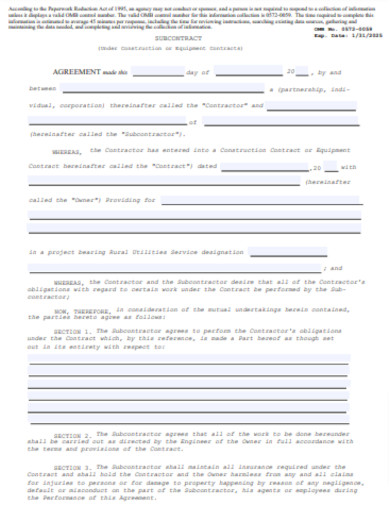
Construction Equipment Subcontractor Agreement
download now -
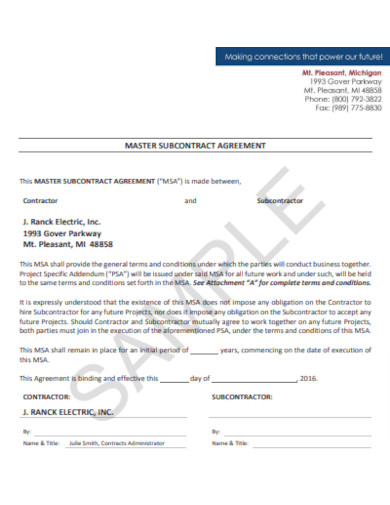
Editable Construction Subcontractor Agreement
download now -
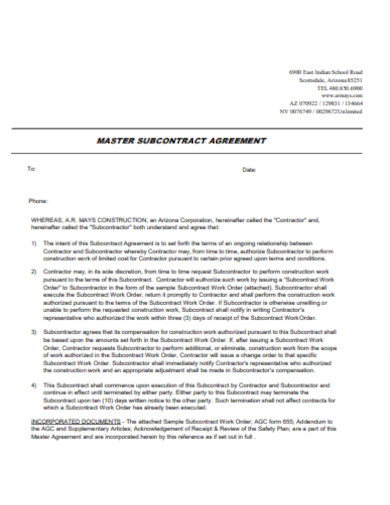
Professional Construction Subcontractor Agreement
download now
Definition:
A Construction Subcontractor Agreement is a legal document between a main contractor and subcontractor, outlining the tasks, timelines, payments, and other terms for services provided by the subcontractor. It ensures clarity of roles, protects both parties’ interests, and provides a foundation for dispute resolution, ensuring smoother operations in construction projects.
Understanding the Construction Subcontractor Agreement:
In the realm of construction, large projects often involve multiple entities, each responsible for a specific aspect of the job. To ensure seamless operations and clear demarcations of responsibility, a construction subcontractor agreement becomes indispensable. Let’s delve deeper into its significance, components, and best practices.
The Need for a Subcontractor Agreement:
Subcontractors specialize in particular areas of construction, whether it’s plumbing, electrical work, or masonry. Hiring them allows the main contractor to leverage their expertise, ensuring quality work and timely project completion. But, without a formal agreement, misunderstandings can arise, jeopardizing the project’s success.
Defining the Scope and Boundaries:
A subcontractor agreement clearly defines the scope of work, setting boundaries and expectations for both parties. This detailed description ensures that the subcontractor knows precisely what tasks they are responsible for and within what timeframe.
Financial Clarity and Protections:
One of the primary reasons for a subcontractor agreement is to outline the payment terms. This section provides clarity on payment schedules, amounts, and conditions, ensuring that both parties have a mutual understanding of the financial commitments and protecting against potential disputes.
Intellectual Property and Confidentiality:
In construction projects, there might be proprietary techniques, designs, or other forms of intellectual property that the main contractor wants to protect. The agreement can include clauses that ensure the subcontractor respects and maintains the confidentiality of such information.
Dispute Resolution Mechanisms:
In the event of disagreements or misunderstandings, the agreement offers a pre-established route for resolution. This can include mediation, arbitration, or specific steps to be taken before resorting to litigation, thus saving time and money.
Quality Assurance and Standards:
The agreement can set out the expected quality standards for the work, ensuring that the subcontractor’s output aligns with the project’s overall goals and specifications. This clarity helps maintain the project’s quality and consistency.
Termination Clauses:
While everyone hopes for smooth sailing, there might be instances where the main contractor or the subcontractor wants to terminate the agreement. A well-drafted subcontractor agreement will provide clear terms and conditions for termination, protecting both parties’ interests.
Safety Protocols and Compliance:
Given the inherent risks in construction, it’s vital to outline the safety protocols that the subcontractor should adhere to. This section ensures that the subcontractor follows industry standards and any specific safety requirements set by the main contractor, minimizing risks and liabilities.
Components of the Agreement:
Project Scope and Responsibilities:
This defines the specific tasks the subcontractor is hired to perform. It should be detailed, outlining the extent of the work, expected deliverables, and any milestones to be achieved.
Payment Terms and Schedule:
Clearly stipulates the compensation amount, payment intervals (e.g., monthly, upon completion), invoicing process, and any retainage or hold-back provisions to ensure quality.
Duration and Deadlines:
Specifies the start date, end date, and any critical milestones in between. This section ensures timely completion of the subcontractor’s responsibilities.
Quality and Workmanship Standards:
Outlines the expected quality of work, adherence to building codes, and any particular specifications or standards the subcontractor must follow.
Materials and Equipment:
Details who is responsible for supplying the materials and equipment. This can clarify whether the subcontractor uses their own tools or if specific materials will be provided by the main contractor.
Liability and Insurance:
Addresses the responsibility for any damages or accidents that may occur. It generally mandates the subcontractor to have their own insurance and sometimes to name the main contractor as an additional insured party.
Change Orders:
Defines the process by which any changes to the original scope of work will be addressed, including how they’ll be priced and documented.
Termination Clauses:
Lays out the conditions under which either party can terminate the agreement, whether for breach of contract, delays, or other specified reasons.
Confidentiality and Non-Compete:
Ensures that the subcontractor keeps any proprietary information confidential and may restrict them from working with competitors for a specified duration after the project.
Dispute Resolution:
Specifies the process to resolve any disagreements, whether through mediation, arbitration, or litigation, and might define the jurisdiction for any legal proceedings.
Warranty:
Specifies the duration and terms of any warranty on the subcontractor’s work, ensuring they stand by their work for a defined period after completion.
Best Practices for Drafting the Agreement:
Understand Both Parties Needs:
Before drafting, ensure both the contractor and subcontractor discuss and understand their respective needs and expectations. This reduces ambiguities and prevents future disputes.
Be Specific and Detailed:
A well-drafted agreement leaves no room for ambiguity. Be as specific as possible about duties, payment terms, deadlines, and quality expectations.
Use Clear Language:
Avoid legal jargon where possible. Using plain, straightforward language ensures that all parties, even without a legal background, can understand the terms.
Incorporate Flexibility:
While specifics are crucial, building in mechanisms for change orders or unforeseen circumstances ensures the contract can adapt to changing situations.
Establish Communication Protocols:
Clearly define how and when communication should take place, including who the primary points of contact are and the preferred methods of communication.
Review Regulatory Compliance:
Ensure the agreement adheres to local, state, and federal laws, especially concerning labor laws, safety regulations, and industry-specific guidelines.
Include Detailed Payment Terms:
Clearly define payment amounts, due dates, milestones triggering payments, and the process for handling disputes over payments.
Address Termination Clauses:
Provide clear reasons and processes for contract termination, ensuring both parties know the grounds and procedures for ending the contract.
Seek Legal Counsel:
While many subcontractor agreement templates are available, it’s essential to consult with legal professionals to tailor the contract to your specific project and jurisdiction.
Revisit and Revise:
Over time, business needs and industry standards can change. It’s good practice to revisit and revise the agreement as necessary, especially if entering into a new project or task.
Ensure Mutual Consent:
Before finalizing, ensure both parties review, understand, and agree to all terms. Both parties should retain a signed copy of the agreement for their records.
Implement a Dispute Resolution Mechanism:
Define a process to handle potential disagreements, which can help avoid costly litigation. Consider mediation or arbitration as alternatives to court proceedings.
Highlight Responsibilities:
Apart from work-related duties, mention other obligations like adhering to safety protocols, reporting requirements, and training if necessary.
Provide for Amendments:
In the construction field, changes can be frequent. Provide a clear process for how amendments to the agreement can be proposed, negotiated, and agreed upon.
Finalizing the Agreement:
Once all terms are negotiated, both parties should review the agreement meticulously. Seeking legal counsel is advisable to ensure all clauses are enforceable and in the best interest of both parties. Upon mutual agreement, both the contractor and subcontractor should sign, and each should retain a copy for their records.
Thorough Review:
Before finalizing, all involved parties should meticulously review the agreement. This step ensures that all terms, conditions, and obligations have been accurately captured and are understood by everyone.
Address Outstanding Concerns:
If any party has reservations or concerns, they should be raised and addressed at this stage. It’s much easier to make changes before the agreement is finalized than after it’s been signed.
Legal Scrutiny:
Engage a legal professional, preferably one with experience in construction agreements, to review the document. They can point out any potential legal pitfalls, ensuring the agreement is compliant with applicable laws and regulations.
Signatures:
For the agreement to be binding, all parties involved must sign it. Ensure the appropriate representatives (those with the legal authority to bind their respective entities) sign the document.
Notarization:
Depending on the jurisdiction or the nature of the agreement, you might consider having the signatures notarized. This adds an extra layer of authenticity and validation to the contract.
Multiple Copies:
Always create multiple original copies of the agreement, so each party can retain one for their records. This ensures everyone has access to the terms and conditions they’ve agreed to.
Digital Tools:
Consider using digital tools or platforms for finalizing the agreement, especially if parties are in different locations. Tools like DocuSign or Adobe Sign can facilitate digital signatures and secure storage.
Implementation:
Once the agreement is finalized, ensure that all relevant teams or personnel are aware of their obligations. Proper communication at the outset can prevent misunderstandings and disputes down the road.
Establish Points of Contact:
Each party should designate a specific individual or team as their primary point of contact. This ensures that communication flows smoothly and efficiently throughout the project.
Review Periodically:
Even after finalizing, it’s a good idea to review the agreement periodically, especially for long-term projects. This ensures that all parties remain compliant with the terms and can adapt to any unforeseen changes or challenges.
Archiving:
Once the project is completed and all obligations have been met, securely archive the agreement. This ensures you have a reference point in case of any future disputes or if you decide to engage in another project with the same subcontractor.
How does the subcontractor agreement delineate the scope of work?
The subcontractor agreement clearly defines the scope of work by detailing specific tasks, deliverables, and project milestones. It outlines the work expectations, materials required, and the duration for each task. This delineation ensures clarity, sets boundaries, and prevents scope creep, providing a clear roadmap for the subcontractor’s responsibilities throughout the project.
Why is it crucial to detail safety measures and protocols in the agreement?
Detailing safety measures and protocols in the subcontractor agreement is crucial to ensure the safety of all workers, minimize risks of accidents, and maintain compliance with regulatory standards. It reinforces the importance of a safe working environment, can prevent potential legal liabilities, and underscores the main contractor’s commitment to best practices in construction safety.
What payment terms should be clear in a subcontractor agreement?
In a subcontractor agreement, payment terms should clearly specify the payment amount, payment milestones or schedule, acceptable payment methods, late payment penalties, retentions, and provisions for handling extra works or variations. This ensures mutual understanding, timely compensation, and can prevent potential financial disputes between the main contractor and the subcontractor.
When should a main contractor draft a construction subcontractor agreement?
A main contractor should draft a construction contractor agreement before the subcontractor commences any work on the project. This ensures that roles, responsibilities, payment terms, and other essential clauses are clearly defined and agreed upon, protecting both parties from misunderstandings, potential disputes, and ensuring a smooth workflow throughout the project’s duration.
What details about the scope of work should be included in the agreement?
The agreement should specify the exact services the subcontractor will provide, including project tasks, deliverables, milestones, quality standards, and any specific materials or methods to be used. Additionally, it should delineate any excluded tasks, provide clear deadlines, and indicate how changes or additions to the scope will be addressed and priced.
In conclusion, A Construction Subcontractor Agreement is paramount for safeguarding the interests of main contractors and subcontractors alike. It streamlines operations, defines roles, and establishes clear expectations. With such a tool, projects can advance with transparency and trust, reducing the risk of potential disputes. Exploring this topic further will undoubtedly offer valuable insights for anyone in the construction domain.

